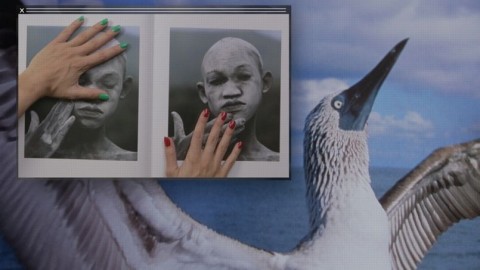Camille Henrot
Thursday, 6 June 2013
Work from The Encyclopedic Palace.
“Camille Henrot’s delicately layered works in sculpture, film, and photography chart the intersections between disparate visual cultures with an anthropologist’s eye. For Coupé/Décalé (2010), Henrot filmed a tribal rite of passage in the South Pacific island of Pentecost in which young men dive off high platforms in the jungle with vines tied around their ankles. In an interesting reversal of the normal course of colonial influence, their land diving served as the inspiration for bungee jumping, and once the sport became a craze in the Western world, the Pentecost islanders started staging the formerly ritualized jumps as tourist spectacles. Henrot spliced the 16mm film down the middle and projected it with one side running behind by a slight lag, suggesting the disjunction that had occurred. This transformation of the ritual, she has pointed out, seems an inversion of cargo cult worship, in which tribal societies would often imitate the behavior of foreigners whose wealth was desired. Henrot has compared this kind of creative fetishism and sympathetic magic to artistic practices. ‘Art and anthropology,’ she has said, ‘are sites for grappling with the construction of cultural identity, fetishism and otherness, and the venues for examining and integrating the fantasy and subjectivity of the researcher.’
For the 55th Venice Biennale, Henrot has created Grosse Fatigue (2013), a video installation that grew out of her fellowship at the Smithsonian Institution in Washington, D.C., during which she conducted research into various national museum archives to constellate historical and contemporary attempts to encapsulate all of human knowledge, whether by way of secular or spiritual means. The specifics of these efforts, of course, are as varied as humanity itself. For Henrot, the subjectivity of the creator is the common thread that links these seemingly impossible projects in both art making and anthropology. And so while each individual striving for total knowledge may not provide an objective truth, they nevertheless create what she calls a ‘prismatic image of the realm of thought.’” –La Biennale di Venezia



